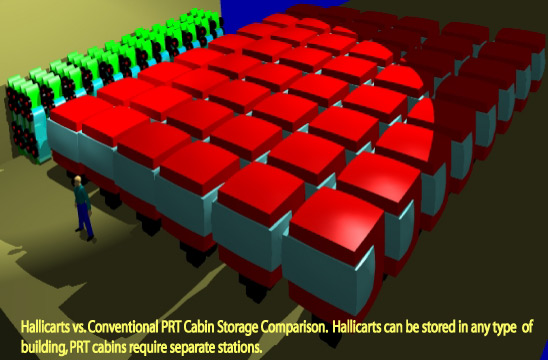
The image on the left shows the enormous space difference in storage between the most common version of PRT that is currently being proposed (a three person cabin), and Hallicarts, shown in green stacked against the
wall. Of note, the proponents of these cabins specifically state that to make the ride more appealing, passengers
will get their own cabin, even though they could seat three. These cabins have heavy undercarriages making them tall, and require the rail to stand upright stable.. If they are not stored locally, riders would have to wait for their sequential arrival. This is to be handled by centralized automation. Massive speed is sacrificed due to the wind resistance, and by taking from the rider control over the vehicle. Since they are intended to stay on the track at all times, this causes numerous complexities not desirable for a system operating on expensive real estate. For example, if an engine fails, the centralized mechanism must now handle pushing that unit to the next station, as well as triggering the switch properly. The low speed means that given the time lost to arrive at the station, the rider spends about as much time as in stop-and-go traffic (40 mph).
But the biggest disadvantage is that these systems can due to overpass height restrictions not be conducted along the highway. Instead, long phases of many miles of street construction ensue, typically with litigation.

